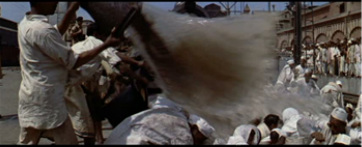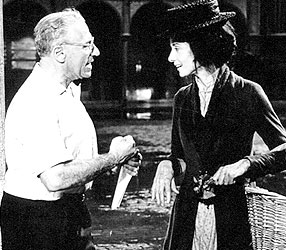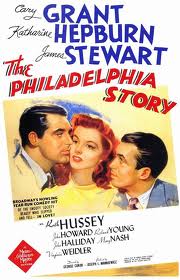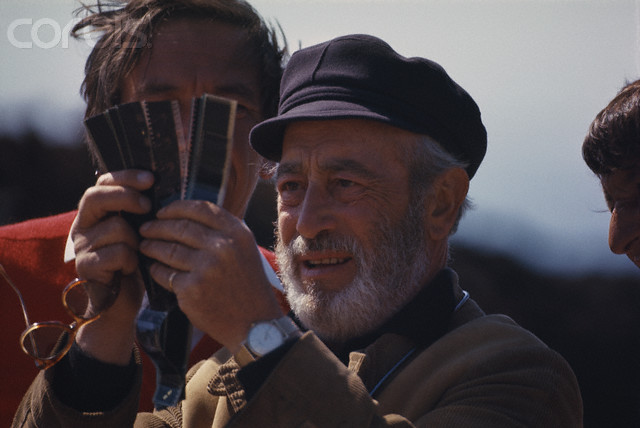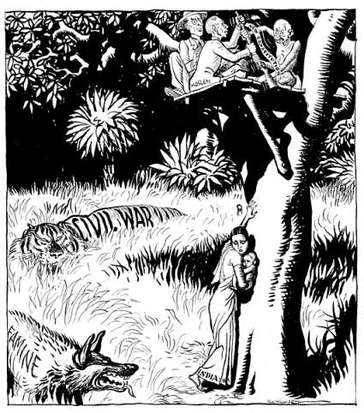Bhowani Junction
The Movie Director and Cinematographer
|
|
George Cukor: DirectorThe reputation of George Cukor, recognized during his long movie-making career as one of Hollywood's great craftsmen, remains just as solid more than a quarter-century after his death. Not only did he show incredible virtuosity in a variety of movie genres ranging from melodrama, musicals, comedies and historical dramas. He was also a great director of women actors, such as Katherine Hepburn, Judy Holliday, Ingrid Bergman and Judy Garland, as well as Ava Gardner in Bhowani Junction. And Cukor was decades ahead of his time in the prominence he gave to examining the role of women in society, and the difficulties they faced in dealing with contemporary sexual and social conventions and double standards. Many of the heroines of his films are part of triangle: the woman having to choose between two men and the different prospects they offer (or choose between three men in Bhowani Junction).
It was a Hollywood secret that Cukor was gay. He directed several key sequences in Gone With the Wind, but left after Clark Gable refused to work with him because Cukor was what Gable called '" a fairy". His lifelong unwillingness to defy the conventional values of his time by openly admitting his sexual preferences appears to have had some significant consequences for the movies he made. The question of personal identity, and the difference between public persona and personal behavior and feeling occurs in many Cukor movies, including Bhowani Junction. Many of his characters are acting out roles to disguise their true identities or social/financial/sexual status. Cukor's cinematic interest in racial minorities and civil rights may also arise from his sexual identity providing him with a sense of victimization and of being an outsider unprotected and vulnerable to forces of prejudice and repression. This theme is conveyed effectively in Bhowani Junction, with Ava Gardiner playing Victoria Jones, daughter of an Indian mother and a British father. What was then called a 'half-caste' identity meant that the person was usually looked down upon by both British and Indian alike as inferior. With Britain preparing to leave India on the eve of independence, Victoria's job as a British army officer and the status that provides her are both disappearing. "In India, Cukor seemed to luxuriate in the logistically complicated crowd scenes, narrowing in on faces and descriptive details. The street riots of Bhowani involved thousands of people running rampant through the streets, and took several days to shoot...." Patrick McGilligan, George Cukor: a Double Life (New York, 1991) Freddie Young: CinematographerBorn in 1902, Freddie Young started work at the British Gaumont film studios (as a tea boy) at age 15. By 1926 he had photographed his first film. Fo the next six decades Young was one of the most sought-after cinematographers in the world and win three Academy Awards for his work. Young's range was remarkable; black and white thrillers and war films, glamorous romances, studio-bound movies with small casts, a James Bond movie and huge epics shot on location.A perfectionist, Young was best-known for the films he made with director David Lean, including Lawrence of Arabia - although he felt that Lean --along with some other directors - took too much credit for what Young had contributed.
By the early 1950s Young was fascinated by the opportunities provided by by Hollywood's innovations in color and widescreen processes. Having proved his prowess in photographing location epics like Mogambo, Young teamed with Cukor in Bhowani Junction. Here director and cinematographer combined to produce images of swirling crowds shot against glowing amber backgrounds, utilizing the usually unrealized potential of the cinemascope process. Within a few years Young would display his mastery of widescreen color in Lawrence of Arabia. |
Bhowani Junction: Racism, Sexism and Nationalism
One of the best features of Bhowani Junction is how successfully the romantic, personal and social concerns of its Anglo-Indian heroine are interwoven into the film's wide and momentous historical context. Set in 1947, the year the Indian subcontinent gained independence from British rule and was partitioned into two nations, India and Pakistan, Bhowani Junction focuses on the various dilemmas facing Victoria Jones. As with so many of Cukor's main characters, she has an awkwardly ambiguous status. She is Anglo-Indian, her father a railway engine driver (many Anglo-Indians worked in the railways) and she herself is a subaltern in the WACs in the British army. Thus she has a job of unusual responsibility for a woman in those days, and this outsider status is reinforced by the fact that Anglo-Indians had an ambiguous status. These descendants of mixed-race marriages and relationships were regarded as neither British nor Indian. Although they had helped the British rule the subcontinent for decades, they were about to be abandoned by their colonial masters and left to fend for themselves in what the historian Geoffrey Moorhouse called "the saddest result of British imperialism".
The plot is propelled by revealing Victoria's changing relationships with several men: an Anglo-Indian who hates Indians, a British officer whose methods of dealing with protest initially shock her, another British officer, who tries to rape her and whom she kills, and an Indian Sikh who saves her after the assault. These relationships occur against a background of nationalist protests and an attempt to kill Gandhi as he travels by train to an important meeting.
The plot is propelled by revealing Victoria's changing relationships with several men: an Anglo-Indian who hates Indians, a British officer whose methods of dealing with protest initially shock her, another British officer, who tries to rape her and whom she kills, and an Indian Sikh who saves her after the assault. These relationships occur against a background of nationalist protests and an attempt to kill Gandhi as he travels by train to an important meeting.
The trailer above gives a reasonably good indication of the film's content. George Cukor did not have final cut; approval. Altrhough MGM liked what they saw, the film was abruptly taken away from him and given a clumsy flashback structure in editing. Aspects of inter-racial relationships were probably diluted by the studio as well.
The film was released in 1956, just as race relations and the civil rights movement in the US were becoming important but highly controversial issues, and Gandhian nonviolence techniques were being advocated by people like M.L.King Jr. as tactics in the struggle against segregation in America.
The film was released in 1956, just as race relations and the civil rights movement in the US were becoming important but highly controversial issues, and Gandhian nonviolence techniques were being advocated by people like M.L.King Jr. as tactics in the struggle against segregation in America.
The Indian Novels of John Masters
Bhowani Junction was probably the nest known of John Masters' series of novels set in India. Masters was born in India in 1914, educated in England, and joined the Indian Army in 1934. During the second world war he served in Burma and the Middle East, ending as a Lt.Colonel. Masters retired from the Army in 1948 and started writing novels. His first novel about India, Nightrunners of Bengal, was published in 1951. An atmospheric and taut story about the Indian mutiny it featured a member of the fictional Savage family, whose military background echoed that of Masters' own family. Several other Indian novels followed, featuring members of the Savage family: The Deceivers, The Lotus and the Wind, and then Bhowani Junction in 1954. The Savage family series were completed with Coromandel in 1955 and Far,Far the Mountain Peak in 1967. The Venus of Konpara was set in India, but was not about the Savage family. Some critics condemned his Savage family sequence as patronizing towards Indians; others were angered by Masters' insistence on showing the follies and inequities of British rule. Masters lived in the USA from 1949 to his death in 1983, and wrote several other novels, some with mountaineering themes.
Two Movies of Interest to Those Who Like Bhowani Junction
|
Cotton Mary is a 1999 film from the Merchant-Ivory team, directed by Ismail Merchant. It is about an Anglo-Indian woman who manipulates her job as nurse to an English couple's child in the early 1950s in order two take advantage of them and to adopt the facade of Englishness herself. It was condemned Anglo-Indian groups on its release. They claimed it demonized Anglo-Indians as thieves, promiscuous, lazy and drunkards.
|
A product of B-movie specialist Sam Katzman and one of his favorite directors Fred Sears (the team who in three years time would make Rock Around the Clock), this movie anticipates one aspect of Bhowani Junction. Its plot concerns a terrorist attempt to blow up a train, although this time the aim is the destabilizing India's frail new democracy and installing a fascist dictatorship. Bhowani Junction it's not, but it moves along briskly.
|



